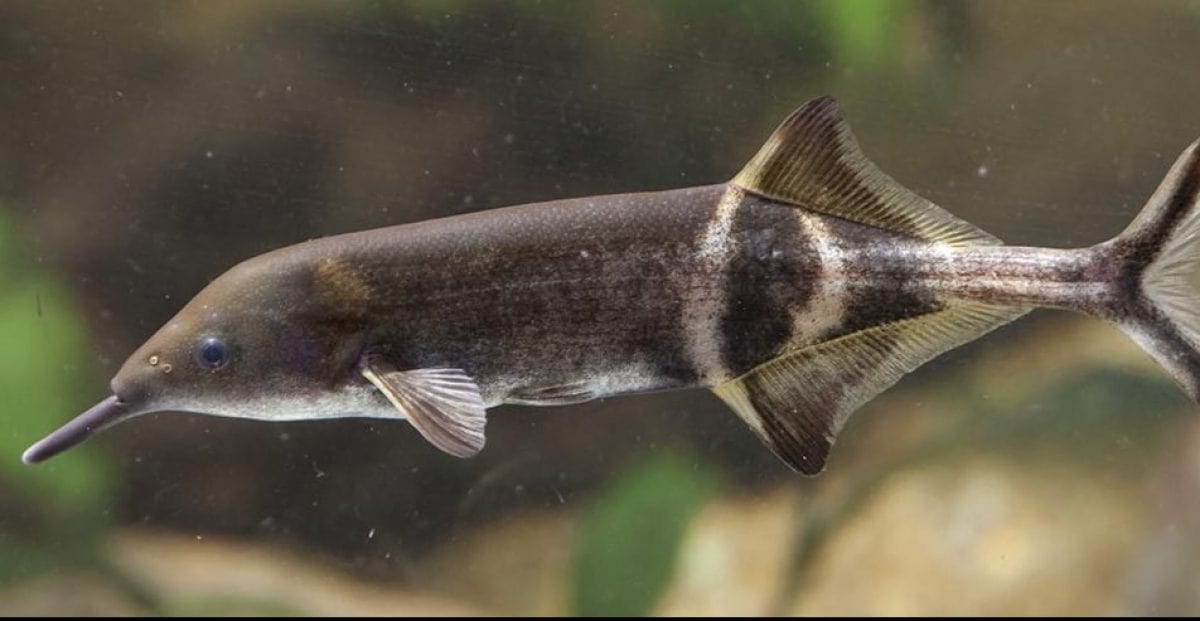
In the murky African riverbeds, eyesight is rendered virtually useless. To navigate their surroundings, some electric fish have evolved a shocking adaptation that challenges our perceptions of sensory intelligence and teamwork in the animal kingdom. Scientists at Columbia University’s Zuckerman Institute recently learned that a species of weakly electric fish (Gnathonemus petersii), also known as the elephantnose fish, shares sensory information within its group almost instantaneously. One fish in the river can instantly tell what lies a far distance in front of it by using the electric field generated by its peers further out.
It’s a remarkable and never-before-seen collective sensing that parallels the collaborative systems used in human-engineered technologies such as sonar and radar.
“In engineering, it is common that groups of emitters and receivers work together to improve sensing, for example in sonar and radar. We showed that something similar may be happening in groups of fish that sense their environment using electrical pulses. These fish seem to ‘see’ much better in small groups,” said Nathaniel Sawtell, a researcher at Columbia’s Zuckerman Institute and a professor of neuroscience at Columbia’s Vagelos College of Physicians and Surgeons.
Nature’s Sensing Network
Electric fish, such as those swimming in the murky waters of the Amazon Basin and the rivers of Africa, generate and sense changes in the electric field around them. This ability, known as electroporation, is almost like a superpower. When an object interrupts or alters the field created by the fish, the change is detected by the electroreceptors. This way, the fish can navigate their pitch-black habitats but also communicate, hunt, and evade predators. Bats and dolphins deploy similar radar-like sensing, except they rely on acoustic signals (echolocation) rather than electricity.
The electric fields are generated through specialized organs derived from muscle or nerve tissues. It’s akin to how a battery works, by moving ions in and out of cells to create a potential energy difference. The electric organ discharge (EOD) can vary greatly among species. Some produce strong electric fields and others emit weaker ones. The strength and frequency of these discharges are often related to the fish’s specific needs, such as communication or the type of prey they target.
Although scientists have known for a long time that electric fish can sense changes in the electric fields around them, they weren’t prepared when they found out there is a strong network effect.
Electric brains
Sawtell and colleagues first developed a computer model that simulates the electrical environment of Gnathonemus petersii. They tweaked the model under various conditions, including scenarios where the electric fish can tap into signals emitted by neighboring fish. The simulations suggested that by tapping into the electrical signals of nearby group members, an individual fish could significantly extend its electrolocation range, potentially tripling its range.

“Think of these external signals as electric images of the objects that nearby electric fish automatically produce and beam to nearby fish at the speed of light,” said Dr. Pedraja. “Our work suggests that three fish in a group would each receive three different “electrical views” of the same scene at virtually the same time,” added Dr. Sawtell in a press release.
The researchers searched for a neural foundation in G. petersii that supports this proposed electrical network sensing effect. They scanned the brains of the fish and found evidence they could detect both their own electric emissions and external electrical signals (either other fish or artificial electrical signals generated in the lab) in a brain area responsible for electrosensation.
Teamwork and coordination
The brain activity patterns they recorded closely resembled the predictions from the computer simulations the researchers ran. Further evidence came from observing the fish’s behavior. In their tanks, the fish formed straight lines and right angles, which computer models identified as optimal for collective sensing.
Additionally, the fish engaged in a precise electrical dialogue, taking turns to emit electrical discharges in a highly orderly manner. The researchers suggest this “echo response” behavior, characterized by strict turn-taking, may be crucial for coordinating their collective sensing abilities.
The concept of collective sensing in the animal kingdom is not entirely new. However, the way these fish amplify their sensing capabilities by leveraging the electrical signals of their peers is rather unheard of. This allows the fish to essentially ‘see’ their surroundings with unprecedented clarity, even in conditions where traditional vision is severely limited.
“These fish have some of the biggest brain-to-body mass ratios of any animal on the planet,” said Dr. Sawtell. “Perhaps these enormous brains are needed for rapid and highly sophisticated social sensing and collective behavior.”
The findings appeared in the journal Nature.









